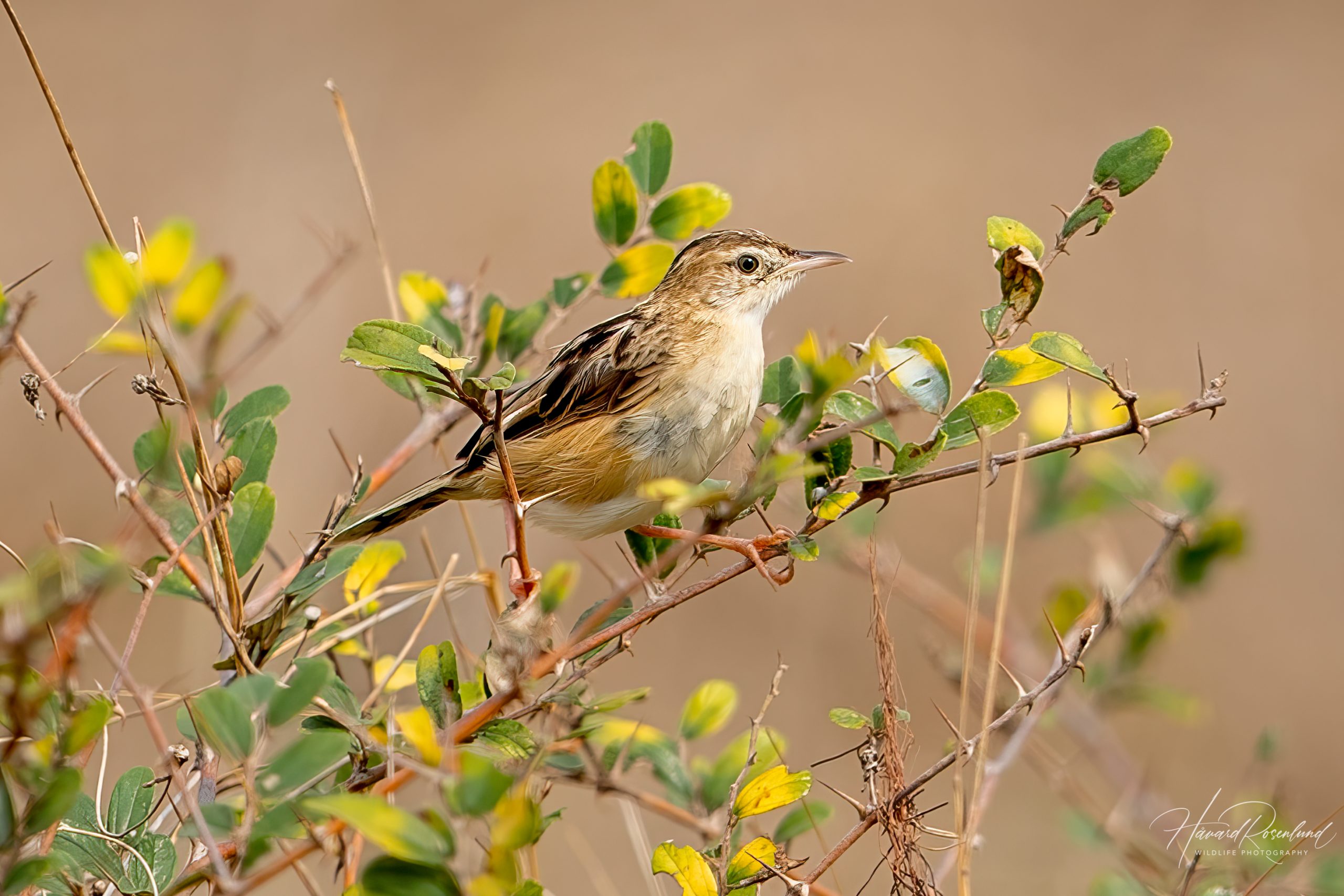Zitting Cisticola
(Cisticola juncidis)
Description
The zitting cisticola (Cisticola juncidis) is a species of warbler found across the Old World tropics and subtropics. It ranges widely across southern Europe, Africa, southern Asia, and northern Australia. This bird measures about 10-14 cm (3.9-5.5 in) in length, and weighs approximately 7-10 grams (0.24-0.35 oz). It is recognized by its brownish upperparts streaked with black, a buff underbelly, and a distinctive high-pitched “zitting” call during flight displays. It has a short, slightly curved, bill, and its tail is typically short and broad with a distinctive square shape. This species can be distinguished from similar cisticolas by its more pronounced streaking and unique call.
Diet & habitat
The zitting cisticola primarily inhabits grasslands, wetlands, and agricultural areas where tall grasses or crops provide cover and nesting sites. It is highly adaptable and can also be found in savannas and along the edges of marshes. Its diet consists mainly of insects and small invertebrates. The bird forages by hopping or flying low over the ground and vegetation, often capturing prey mid-flight or picking it off leaves and stems.
Behavior
Zitting cisticolas are known for their conspicuous and elaborate aerial displays during the breeding season. Males perform a characteristic “zitting” song while flying in a zigzag pattern, which serves to attract females and establish territory. These birds are generally solitary or found in pairs, especially during the breeding season, but can sometimes form small flocks outside of the breeding period.
Nesting
The breeding season of the zitting cisticola varies with location but generally occurs during the rainy season or spring when insect prey is most abundant. The male builds a loose, globular nest from grasses and plant fibers, which is suspended within tall grass or crops. The female lays 3-5 eggs, which she incubates alone for about 11-13 days. Once hatched, both parents participate in feeding the chicks, which fledge approximately 10-12 days after hatching.
Status
The zitting cisticola is listed as least concern on the IUCN Red List due to its wide range and large population size. It is not considered threatened, although habitat destruction and changes in agricultural practices could pose potential risks in certain regions.







